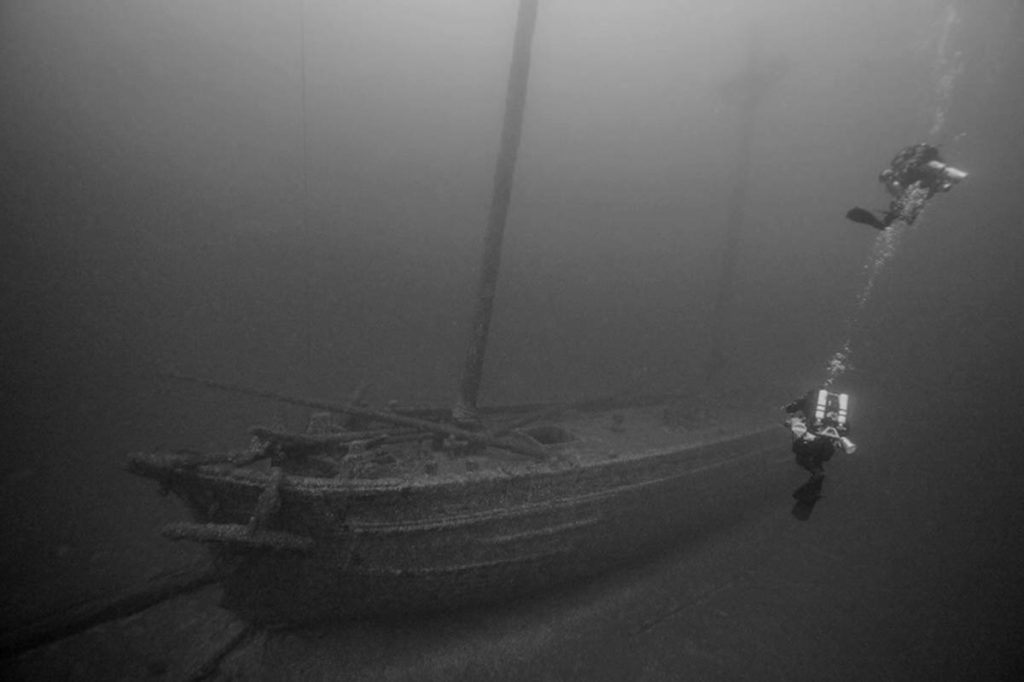On November 5, 1860, the Kyle Spangler collided with the downbound schooner Racine while ascending Lake Huron with 15,000 bushels of corn. On that dark night, there was no time to avoid the schooner Racine as it slammed into the Spangler’s wooden bow, crushing it and sinking her in 10 minutes. The entire crew survived.
Kyle Spangler is one of the most well-preserved canal schooners in Thunder Bay National Marine Sanctuary. It is a beautiful shipwreck to visit, standing at 180 feet and a photographer’s delight. The shipwreck is an amazing example of a mid-century Great Lakes sailing schooner, with masts still upright, anchors hanging from the bow, bilge pumps, aft cabin, ship’s wheel, and name plate all still in place. The only damage to the wreck is a broken bow caused by the collision that sank the ship.
Basil L. Spangler, born in 1817, was a Cleveland dry-goods merchant who ran his own firm, B. L. Spangler and Company. Spangler commissioned William Jones, a shipbuilder from Black River Ohio (now Lorain), to build a schooner in 1856. Kyle Spangler was named after Spangler’s son, who was born in 1851. The ship was launched on May 12, 1856, and left Cleveland two days later with a cargo of coal.

The Spangler was a traditional cargo schooner from the mid-nineteenth century that hauled various cargoes on the freshwater Great Lakes and on to saltwater ports along the east coast. Examples include iron ore, salt, coal, corn, and wheat.
The Spangler, like many other schooners of the time, was involved in a number of shipping incidents. She ripped a hole in her bottom on a reef in Lake Huron in May 1856. She sank in Lake Michigan in 1857 after a leak caused her to run aground just south of Sleeping Bear Bay. It took nearly a year for her to be refloated. In 1858, the ship was dismasted, and later that year, it collided with another schooner in the Straits of Mackinac. The Spangler sailed into the Atlantic Ocean with a cargo of lumber in 1859, returning the following spring.
The well-preserved Spangler was discovered in 2003 by Michigan diver Stan Stock, and it has become a symbol of the nineteenth-century Great Lakes shipping economy, as well as one of the Thunder Bay National Marine Sanctuary shipwrecks, which protects nearly 100 historic shipwrecks in Lake Huron off the Michigan coast. The sanctuary works to ensure that future generations can enjoy these underwater treasures through research, education, and community involvement.






